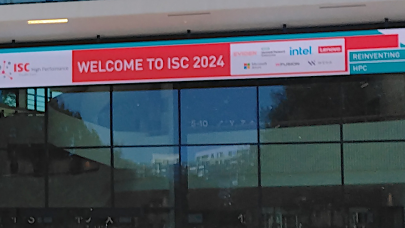Oct. 21, 2021 — Sporting whimsical names like Daffodil, Brown Dog, Clowder, ERGO, or PEcAn, there’s nothing funny about the power these applications developed at the National Center for Supercomputing Applications bring to the end-user.
 “Applications is in our name,” NCSA founder and former director Larry Smarr was often heard to say. After 35 years and scores of software releases, NCSA’s software teams have firmly cemented their place as a global leader in open-source software and application development, and they show no signs of slowing down. Especially as the current research environment is far different than prior decades and research teams need NCSA’s software offerings and software development experience more than ever.
“Applications is in our name,” NCSA founder and former director Larry Smarr was often heard to say. After 35 years and scores of software releases, NCSA’s software teams have firmly cemented their place as a global leader in open-source software and application development, and they show no signs of slowing down. Especially as the current research environment is far different than prior decades and research teams need NCSA’s software offerings and software development experience more than ever.
“Research today relies more heavily on computation, data, and software,” says Kenton McHenry, associate director of NCSA’s Software directorate. “This is where we come in to support these aspects within research efforts.”
Research Software Engineers Are the Difference
McHenry, along with deputy director Jong Lee, coordinates the activities of more than 40 research software engineers. RSEs differ from traditional computer programmers, explains McHenry, in that “an RSE is part of the teams and labs that they join, they are collaborators working through the research needs, publishing, and at times helping propose research activities along with scientists.”
RSEs, say McHenry and Lee, combine professional software engineering expertise with an intimate understanding of research that leads to that ability to easily reproduce the research. The blending of expertise with understanding also allows the RSEs to develop tools that provide sophisticated outcomes that are easy for researchers to use and meet the scientists’ needs.
One area in particular that has garnered much attention has been around the large volume and variety of scientific data. “Instead of just knowing their field of science, now research teams need to try and deal with mountains of data as well. So broad access to data analysis and visualization tools, as well as the data sets, is needed,” explains Lee.
Tools like NCSA’s Clowder, for example.
One of the key features of Clowder is its flexibility. A customizable and scalable data management framework to support any data format and multiple research domains, Clowder’s learning curve is fairly easy. The tool allows researchers to interact with their data to visualize it to see the data in a meaningful way, leading to new insights.
Although Clowder was created to manage data from sensors in environmental and civil engineering studies, like lake and river monitoring, it can be used for other research as well, such as the location of metropolitan infrastructure or measuring phenotypes for plant breeding.
Going Beyond the Labs
Some tools and software are created for research purposes but then broaden to become beneficial to society. That’s what happened with ERGO, a seismic risk assessment platform. ERGO integrates the latest research findings, most accurate data, and new methodologies into a single software platform.
ERGO began its life as MAEviz, a research tool for the MidAmerica Earthquake Center at the University of Illinois at Urbana-Champaign. It was designed to provide detailed predictions of the damage resulting from an earthquake, including the toll on people, infrastructure, and services. Through the years, it evolved into an open-source software used by emergency officials worldwide to create and evaluate “what if” models to better prepare their regions and try to minimize catastrophic impact on people, buildings, and infrastructure in the event of an earthquake.
The NCSA software team also assisted the University of Illinois Extension Service with the creation of MarketMaker. What launched in 2000 as a way to easily connect food-producing farmers with economically viable new markets, MarketMaker has grown into a platform with more than 18,000 profiles of food-related enterprises, connecting food entrepreneurs with their customers, including general-public consumers.
Food was also at the forefront when the NCSA team came to the aid of farmers trying to make planting decisions with the team’s collaboration on the Gardner farmdoc calculator. This free tool lets farmers run different pricing forecast scenarios to estimate commodity payments and make crop planting decisions.
New Challenges Welcome
While the team is very busy, they’re always looking for new projects where they can help make an impact as well as test their skills and creativity. If you are part of a scientific effort and are dealing with aspects of software development, data management, or computational/storage consider reaching out.
Says McHenry, “We will help in any way we can, from developing new tools, to helping leverage existing open source tools, to developing a proposal to NSF or other agencies to fund such endeavors.”
About NCSA
The National Center for Supercomputing Applications at the University of Illinois at Urbana-Champaign provides supercomputing and advanced digital resources for the nation’s science enterprise. At NCSA, University of Illinois faculty, staff, students and collaborators from around the globe use these resources to address research challenges for the benefit of science and society. NCSA has been advancing many of the world’s industry giants for over 35 years by bringing industry, researchers and students together to solve grand challenges at rapid speed and scale.
Source: Barbara Jewett, NCSA


























































